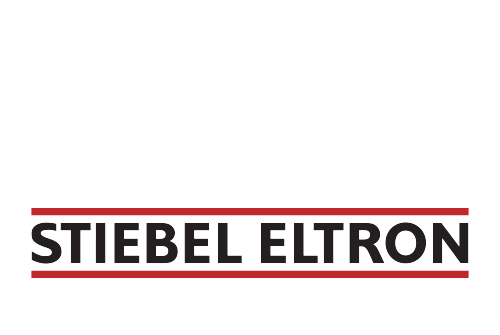Choosing between a point-of-use and a whole-house tankless water heater can be a game-changer for your home's efficiency and energy bills.
Point-of-use models are compact devices that deliver hot water directly to a single fixture, like a sink or shower. They are ideal for areas where hot water demand is limited and immediate.
In contrast, whole-house models can supply hot water to multiple fixtures simultaneously, making them suitable for larger households with higher water usage needs.
For homes with limited hot water needs at specific locations, point-of-use tankless water heaters offer an efficient and cost-effective solution. These units ensure rapid delivery of hot water and reduce energy consumption by heating water only when necessary.
On the other hand, if you live in a home with multiple bathrooms or a high demand for hot water, a whole-house tankless water heater may be better suited to provide consistent service across all fixtures without the risk of running out of hot water.
Key Takeaways
- Point-of-use heaters are best for single fixture hot water needs.
- Whole-house heaters suit homes with high, simultaneous hot water use.
- Economic and environmental impacts vary between the two types.
Understanding Tankless Water Heaters
Tankless water heaters are a popular choice for those looking to maximize energy efficiency and save space. They provide an ongoing supply of hot water while minimizing energy waste by heating water only as needed.
Advantages of Tankless Water Heaters
Tankless water heaters offer several benefits. Endless hot water is a major advantage, as these systems heat water on demand. This means you'll never run out, which is great for families or those who use a lot of hot water.
Energy efficiency is another key benefit. By heating water only when you need it, these heaters use less energy compared to traditional tank systems. This can lead to savings on your energy bills.
Additionally, their compact size makes them ideal for homes with limited space, as they can be mounted on a wall and don’t require a bulky tank.
How Tankless Water Heaters Work
Tankless water heaters operate by using a heat exchanger. When you turn on a hot water tap, cold water travels through the unit. An electric or gas element then heats the water instantly.
Electric tankless water heaters use a heating element powered by electricity, making them suitable for areas with lower demand on the unit.
On the other hand, gas tankless water heaters utilize natural gas or propane, often offering a higher flow rate for homes with more intensive hot water needs. The result is hot water available whenever you need it.
Point-of-Use Tankless Water Heaters
Point-of-use tankless water heaters provide hot water directly at the location needed, making them ideal for smaller spaces or specific uses. They are energy-efficient and can help reduce installation costs, as they minimize the need for extensive plumbing.
Suitability for Smaller Hot Water Requirements
Point-of-use systems are well-suited for smaller hot water needs, such as in bathrooms or kitchens. With hot water on demand, you won't have to wait for large tanks to heat up.
These units typically offer a lower flow rate compared to whole-house models, making them perfect for single outlets with limited demand.
They are particularly beneficial if your hot water demand is sporadic or concentrated in one area. For example, if you need instant hot water in a guest bathroom, a point-of-use system would efficiently meet that need without wasting energy.
The compact size of these heaters also fits well in tight spaces, so you can install them under sinks or next to fixtures.
Installation Considerations for Point-of-Use Systems
Installing a point-of-use tankless water heater is generally less complex than a whole-house system. These units can often be connected directly to the existing plumbing without major alterations, leading to lower installation costs.
It's important to consider the flow rate required for your specific needs.
You'll need to ensure that your electrical or gas supply can support the demands of the unit.
The ease of installation makes it a feasible DIY project for those comfortable with plumbing and electrical work, though professional installation is always recommended for optimal safety and efficiency.
Selecting the right capacity is crucial, so calculate your hot water demand accurately to avoid any performance issues.
Whole House Tankless Water Heaters
Whole house tankless water heaters provide hot water on demand for an entire home. These systems can be ideal for families with high water usage by offering consistent hot water supply while saving energy.
Assessing Need Based on Hot Water Consumption
When considering a whole house tankless water heater, it's important to look at your water consumption patterns. You should consider how often hot water is used simultaneously across multiple fixtures.
This is crucial in determining the capacity you need.
A household with frequent, simultaneous hot water usage, like multiple showers or running laundry and dishes at the same time, will need a larger capacity heater.
Analyze your peak hot water demand to decide the appropriate unit size to purchase. Whole house models excel at maintaining hot water supply efficiently, even during peak usage.
Installation and Maintenance Factors
Proper installation is key for whole house tankless systems to perform optimally. Professional plumbers are highly recommended to install these systems due to the complexity involved.
When thinking about installation, check the property’s existing plumbing and electrical system, ensuring they support the new heater.
Maintenance of these heaters includes regular checks to prevent scaling and ensure energy efficiency. Unlike traditional tanks, tankless models may require water filters to handle hard water issues.
Regular maintenance can extend the lifespan of the heater and maintain its performance. Following manufacturer guidelines will ensure the heater operates smoothly and efficiently.
Economic Considerations of Tankless Water Heaters
Tankless water heaters offer financial benefits by providing energy savings and reducing utility bills over time. Yet, initial purchase and installation expenses can be higher compared to traditional heaters. Understanding the balance between the upfront costs and potential long-term savings is key to making an informed decision.
Analyzing Upfront Costs vs. Long-Term Savings
The initial cost of installing a tankless water heater can be substantial. Prices may range from $800 to $3,500, depending on factors like the model and installation needs. You might also face additional expenses if your home requires electrical upgrades or gas line adjustments.
Despite these initial costs, tankless water heaters are energy efficient, reducing energy loss typically associated with traditional models.
This efficiency can lead to lower energy bills over time, with savings often seen in reduced monthly utility costs.
The long lifespan of tankless systems also contributes to economic benefits. Many can last over 20 years with proper maintenance, which means you could save significantly on replacement costs compared to conventional water heaters.
As energy prices rise, the efficiency and savings offered by tankless models become even more attractive.
Environmental Impact and Efficiency
Tankless water heaters are known for their potential to lower energy consumption and reduce environmental impact. The choice between point-of-use and whole-house models can affect factors like energy savings and component lifespan. Exploring these elements helps you make an informed decision.
Reducing Carbon Footprint with Energy-Efficient Models
Tankless water heaters are designed to be more energy-efficient.
On average, they can offer between 24% and 34% more energy efficiency compared to traditional storage tank models.
This energy efficiency not only helps reduce your energy bills but also minimizes your carbon footprint.
Energy-efficient models heat water only when needed, eliminating the need for a constantly heated storage tank. This process reduces standby energy loss significantly.
The efficiency depends partly on the model’s gallons per minute (GPM) capacity, which determines the water flow rate that can be delivered.
Choosing a model with an appropriate GPM for your needs ensures optimal performance without wasting energy, leading to a smaller environmental impact.
Impact of Hard Water on Efficiency and Lifespan
When selecting a tankless water heater, it’s crucial to consider how hard water can affect performance and longevity.
Hard water contains high mineral content, such as calcium and magnesium, which can lead to scale buildup inside the heater. This buildup can significantly reduce energy efficiency and even prevent the heater from reaching desired temperature rise levels.
A build-up of scale can also shorten the lifespan of your tankless water heater.
To combat this, regularly descaling your device and installing a water softener can help extend its life and maintain its efficiency.
Taking these steps ensures you get the most out of your heater while reducing long-term environmental impact.
Frequently Asked Questions
Exploring the differences between point of use and whole house tankless water heaters helps in understanding their installation, functionality, and efficiency. It's important to know how they handle simultaneous usage and how to choose the right size for your needs.
What are the pros and cons of installing a whole house electric tankless water heater?
A whole house electric tankless water heater provides hot water on demand for an entire house, saving space compared to traditional heaters. The downside is that it may require a significant electrical upgrade to handle the demand and could be more costly to install initially.
How does a point of use water heater differ in functionality from a whole house model?
A point of use water heater is typically installed near where hot water is needed, like a sink, heating water quickly and reducing wait time. A whole house model serves multiple fixtures simultaneously, supplying hot water throughout the entire home.
Is an electric whole house tankless water heater capable of providing sufficient hot water for multiple simultaneous uses?
An electric whole house tankless water heater can provide enough hot water for simultaneous uses if properly sized. This means ensuring the unit's flow rate meets the demands of all the appliances and fixtures in use at once.
When should one consider a whole house tankless water heater over a point of use option?
Consider a whole house tankless water heater when you need hot water consistently across multiple points in the house. This option is best for homes with high hot water demands and multiple bathrooms.
What are the primary factors to consider in sizing a whole house electric tankless water heater?
When sizing a whole house electric tankless water heater, consider the flow rate needed (measured in gallons per minute) and the temperature rise required.
Identify the peak usage times in your household to ensure the heater can handle the demand.
Can a whole house propane tankless water heater be more efficient than its electric counterpart?
A whole house propane tankless water heater can be more efficient than electric models. This is especially true in areas where propane is cheaper than electricity.
They tend to heat water faster and offer greater energy savings depending on local energy costs.
Discover the Perfect Fit: Point of Use vs. Whole House Tankless Water Heaters
At Stiebel Eltron, we are dedicated to helping you make informed decisions about your home’s water heating needs.
Understanding the key differences between point of use and whole house tankless water heaters is essential for selecting the right system for your lifestyle.
Our point of use models provide on-demand hot water exactly where you need it, perfect for smaller spaces or specific fixtures.
In contrast, our whole house systems are designed to deliver consistent hot water throughout your entire home, ensuring comfort and efficiency for all your daily needs.
Trust Stiebel Eltron to guide you in choosing the optimal solution that meets your unique requirements and enhances your home’s comfort.

